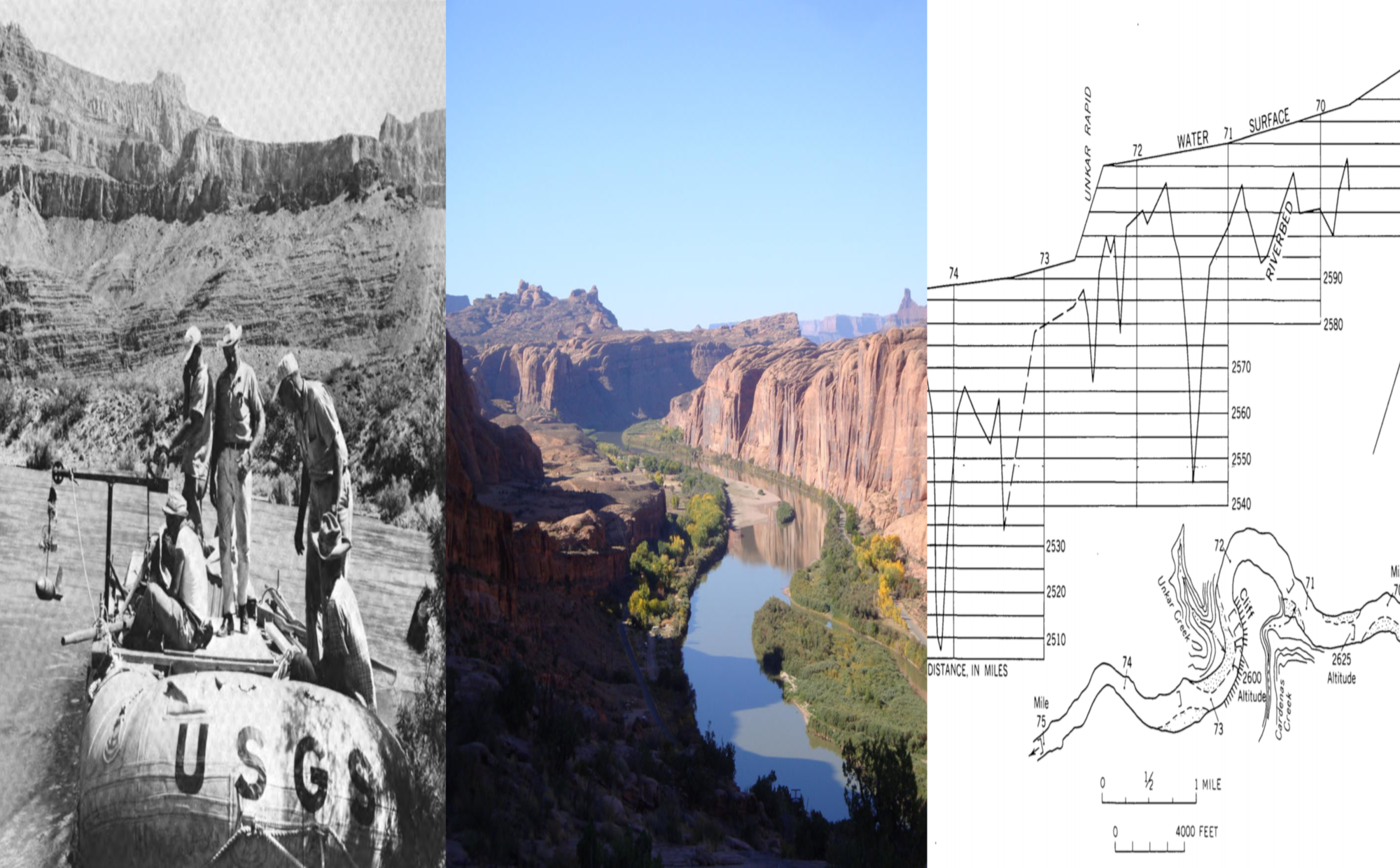The photo below, taken by William Emmett, is published on the website of the U.S. Geological Survey. Pictured are Ralph Alger Bagnold (left) and Luna Bergere Leopold (right, with guitar), seated during a quiet moment in an excitement-filled rafting expedition down the Green and Colorado rivers in March 1966.

Born in 1896, Bagnold is a generation older than Leopold (b. 1915), and already by this point a legend in his field, largely on the basis of his explorations of the Sahara in the 1920s and 1930s, his 1941 book The Physics of Blown Sand and Desert Dunes, and his establishment of the Long Range Desert Group during World War II.
Leopold, meanwhile, has just stepped down from a nearly decade-long position as head of the USGS’s Water Resources Division, where he was responsible for coordinating a veritable army of data collectors and research scientists and where he played a leading role in the development of the fields of hydrology and fluvial geomorphology in the United States.
By the time they were rafting down the Green River toward Cataract Canyon in 1966, Bagnold and Leopold had been collaborating for a number of years on studies of the processes that shape rivers and the landscapes around them. Even after their work together had largely run its course, they remained close friends, trading visits between Leopold’s cabin in Wyoming and Bagnold’s home in the United Kingdom. This photograph is, among other things, evidence of the kinds of field experiences that drew them together as scientists and as friends.
It is also evidence of the tangled roots of the science of rivers. From a present-day perspective, their close collaboration comes as something of a surprise. While both are recognized as seminal figures in fluvial geomorphology, they have come to stand for almost diametrically opposed research styles. To be a “Leopoldian” scientist is to search for correlations among the different parameters that characterize river systems (such as flow rate and channel shape), without worrying much about the basic mechanisms that produce those correlations. To be “Bagnoldian,” in contrast, is to focus precisely on those basic physical mechanisms, only turning to the behavior of actual rivers in order to validate (or invalidate) the physics-based models.
Defined this way, it is hard to be “Bagnoldian” and “Leopoldian” at the same time. But as this photo suggests, Bagnold and Leopold not only had much to learn from each other but also greatly enjoyed each other’s company. In some ways, they even needed each other to pursue their common science in the distinctive ways they did. Leopold needed Bagnold’s expertise in math and physics to refine his models of empirical relationships, for example, while Bagnold needed Leopold’s rich sets of data from real-world rivers to test his physics-based predictions. Both had resources and skills that the other needed—a kind of dependency that also characterized, and continues to characterize, the field of fluvial geomorphology as a whole.
Such surprising links between seemingly distant or even opposed approaches, which are often nurtured as much by personal relationships and embodied experiences as they are by shared techniques or theories, are a recurring theme in the history of river science—one that future posts in this series will return to.
